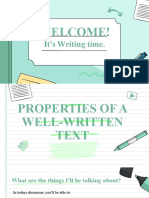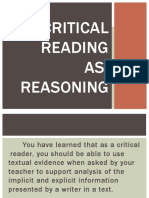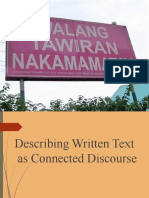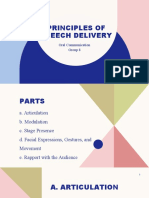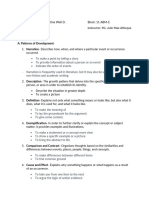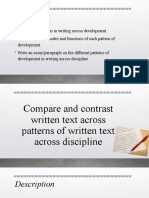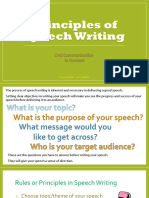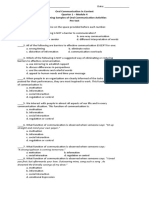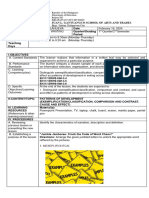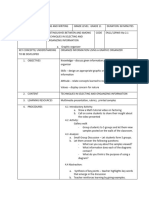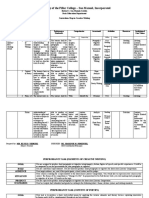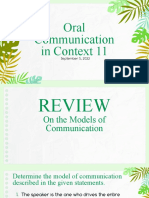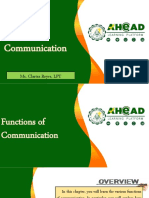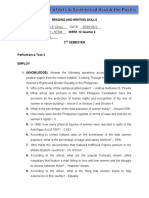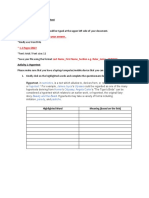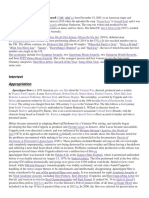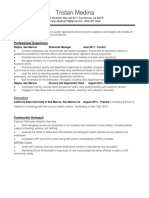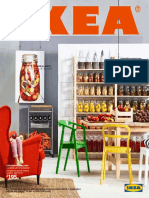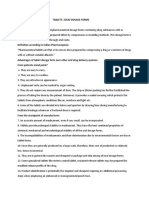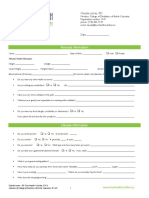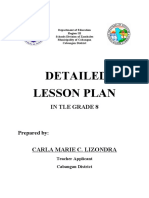0% found this document useful (0 votes)
256 views57 pagesLesson 3 Patterns of Development
The document provides an overview of different patterns of development that can be used to organize written work, including narration, description, definition, exemplification/classification, comparison and contrast, cause and effect, and problem and solution. It discusses the purpose and key components of each pattern and gives examples of how they are commonly used.
Uploaded by
Jensen MalvedaCopyright
© © All Rights Reserved
We take content rights seriously. If you suspect this is your content, claim it here.
Available Formats
Download as PDF, TXT or read online on Scribd
0% found this document useful (0 votes)
256 views57 pagesLesson 3 Patterns of Development
The document provides an overview of different patterns of development that can be used to organize written work, including narration, description, definition, exemplification/classification, comparison and contrast, cause and effect, and problem and solution. It discusses the purpose and key components of each pattern and gives examples of how they are commonly used.
Uploaded by
Jensen MalvedaCopyright
© © All Rights Reserved
We take content rights seriously. If you suspect this is your content, claim it here.
Available Formats
Download as PDF, TXT or read online on Scribd
/ 57




